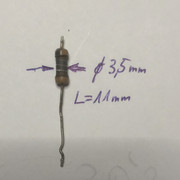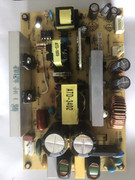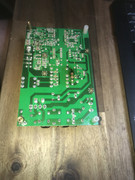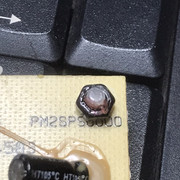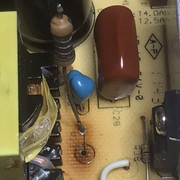Post by gjaky on Dec 12, 2015 15:14:59 GMT -5
This thread is rather intended for the more technical minded / experienced members (MT, Nashou, Barclay...) In the past few days I was wondering about the fact that the NEC XG projectors are accused to be picky about signal timings and that they are clipping the edges of a standard 1080p image out of BD players etc.
Clearly this is an issue with the horizontal retrace, which is fully automatically switched with the Horizontal frequency range, unlike barco or Marquee where it is possible for the user to alter somewhat these settings.
The XG has horizontal retrace times:
30-77kHz: 2.6us
77-120kHz: 2.0us
120-130kHz: 1.4us
For comparison the Marquees have retrace times:
30-60kHz: 3.3us (short)
60-130kHz: 1.6us (short)
60-100kHz: 2.5us (long)
Standard 1080p 60Hz material has fh about 67kHz, the line time is roughly 15us (incl. retrace), as you see it does matter if the retrace is 1.6us or 2.6us, also lesser the retrace time, less porch is needed, therefore the pixel clock would be less too.
I've studied briefly the common Horizontal deflection circuits. Typically the retrace time is altered by switching the deflection yokes in series/parallel. There are fixed capacitors parallel with the yokes, and there are other capacitors those are switched separately. The more the capacitance added to the circuit the longer the retrace is.
Generally we would want as short retrace time as possible, and this is where it gets complicated.
My understanding of these circuits are not very comprehensive though.
As I see with decreasing retrace capacitance the retrace time shortens, but also the voltage peak gets higher, which is essentially limited by the horizontal output transistor's breakdown voltage.
But I think too short retrace can cause instability. This is could be one reason for raster ringing on Marquee projectors. Increasing the retrace time on Marquee projectors with adding small capacitance.Was this already experimented?
For the XG however the capacitance should be decreased to get lower retrace times.
This is so far just theory and speculation. Any insight is welcome.
Clearly this is an issue with the horizontal retrace, which is fully automatically switched with the Horizontal frequency range, unlike barco or Marquee where it is possible for the user to alter somewhat these settings.
The XG has horizontal retrace times:
30-77kHz: 2.6us
77-120kHz: 2.0us
120-130kHz: 1.4us
For comparison the Marquees have retrace times:
30-60kHz: 3.3us (short)
60-130kHz: 1.6us (short)
60-100kHz: 2.5us (long)
Standard 1080p 60Hz material has fh about 67kHz, the line time is roughly 15us (incl. retrace), as you see it does matter if the retrace is 1.6us or 2.6us, also lesser the retrace time, less porch is needed, therefore the pixel clock would be less too.
I've studied briefly the common Horizontal deflection circuits. Typically the retrace time is altered by switching the deflection yokes in series/parallel. There are fixed capacitors parallel with the yokes, and there are other capacitors those are switched separately. The more the capacitance added to the circuit the longer the retrace is.
Generally we would want as short retrace time as possible, and this is where it gets complicated.
My understanding of these circuits are not very comprehensive though.
As I see with decreasing retrace capacitance the retrace time shortens, but also the voltage peak gets higher, which is essentially limited by the horizontal output transistor's breakdown voltage.
But I think too short retrace can cause instability. This is could be one reason for raster ringing on Marquee projectors. Increasing the retrace time on Marquee projectors with adding small capacitance.Was this already experimented?
For the XG however the capacitance should be decreased to get lower retrace times.
This is so far just theory and speculation. Any insight is welcome.


